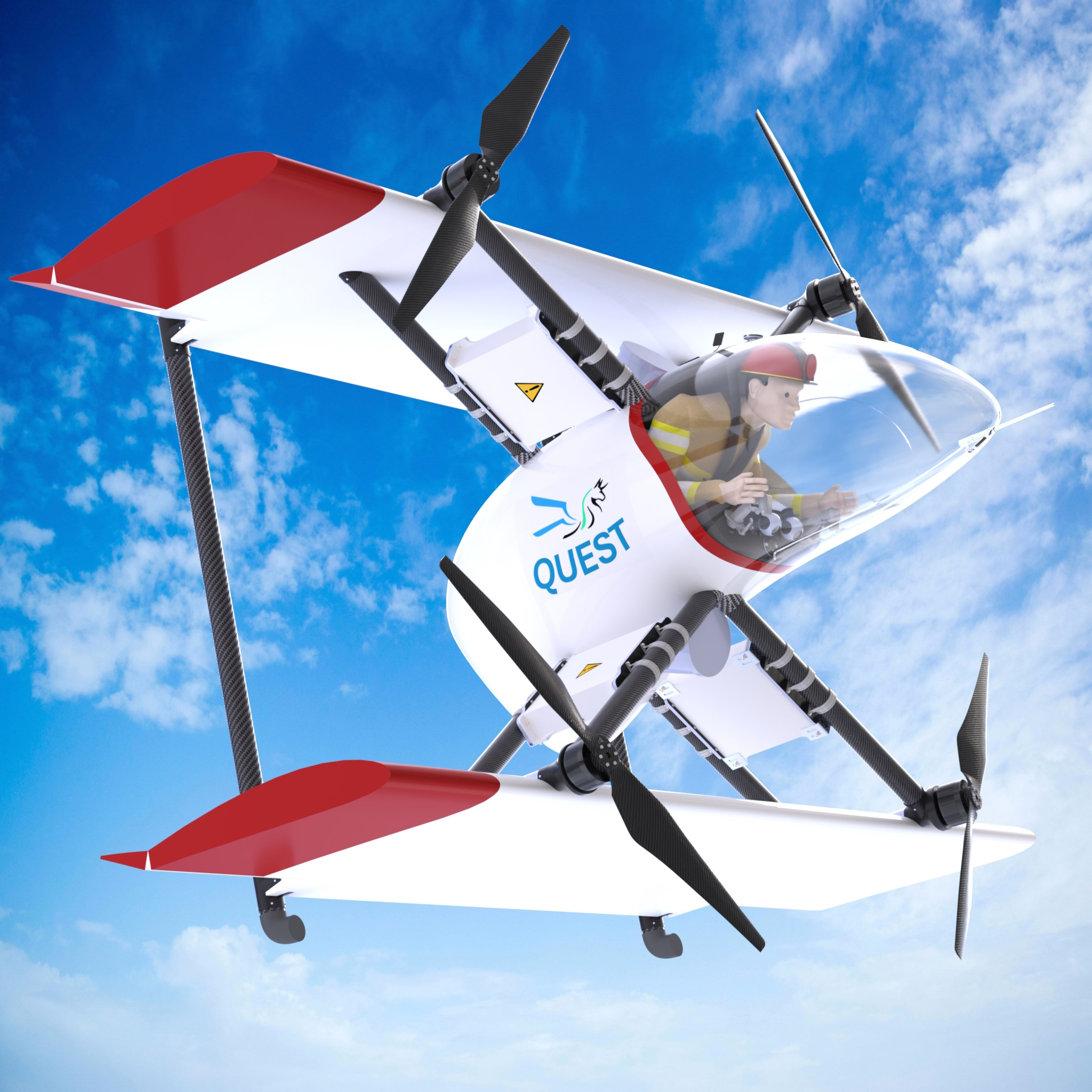
Students in Texas A&M University’s Department of Aerospace Engineering are being recognized for their work shaping the future of disaster relief.
Up against nearly 200 teams from 80 countries in academia and industry, Team Harmony is one of 11 international teams to receive the $10,000 award for winning Stage-I of Boeing’s $2M GoAERO competition and one of 14 universities to receive an award from NASA’s University Innovation project. NASA’s University Innovation Award aims to assist university teams in building prototypes of their designs. Harmony was one of only three teams to receive both awards.
Led by Dr. Moble Benedict, associate professor of aerospace engineering, Team Harmony has now advanced to Stage II in this international competition to use autonomous aerial vehicles to improve emergency response capabilities. Team Harmony is made up of two faculty, one postdoc, and five graduate students from Texas A&M and Oklahoma State University.
Boeing’s two-year competition requires teams to showcase their autonomous capabilities in some of the most demanding situations: natural disasters.
“Imagine a hurricane strikes a city, and people are in need of basic supplies like medicine, clothes, and food. The only way to get to those areas when there is flooding is by air,” said Benedict.
Currently, helicopters fill this need by airdropping supplies into areas that have been isolated by damaged infrastructure. The significant resources needed for helicopter rescue, such as the need for a trained pilot and the high operational cost of the helicopter itself, limit the effectiveness of this method. Benedict’s team designed a low-cost vehicle to overcome this hurdle by flying autonomously and optimizing electric flight.
This hybrid vertical flight and cruise capable aircraft, called QUEST, uses four propellers to give it the mechanical simplicity and agility of a quadrotor drone in vertical flight and a set of biplane wings to make cruise flight more energy efficient. Unlike current payload-carrying drones, Harmony would be able to carry a person into disaster zones.
“We’re trying to bring the best of both worlds. It has the efficiency of a fixed-wing aircraft and the simplicity and agility of a drone in vertical flight,” said Benedict. “We can fly farther and longer than a conventional drone could. Our vehicle can fly in first responders and medical supplies that could save lives.”
Benedict was involved in a similar competition from 2018 – 2020, then called GoFly, to develop a compact, quiet, and efficient personal air vehicle. His team built a full-scale 550-lb model of their vehicle, though the prototype was unfortunately destroyed during flight testing.

The experience is invaluable for the students involved, creating a bridge between theory taught in classrooms and real-world engineering.
“GoAERO is a great opportunity to build a real engineering product and solve a real engineering problem,” said Benedict, “The experience and the expertise that the students gain from it could be invaluable when they go and work in the industry.”
Benedict’s GoFly team alumni include engineers working in autonomous systems, the space industry, the helicopter industry, and academia. One former student, Dr. Atanu Halder, went on to become a professor at Oklahoma State University, and he and his two graduate students are part of the TAMU-OSU GoAERO team.
In the coming months, Team Harmony will build a half-scale model for testing. After that, they will build a full-scale model for the final fly-off in 2027. If all goes well, Harmony’s performance in Stage-III of the competition will showcase how autonomous flight can help in disaster zones.